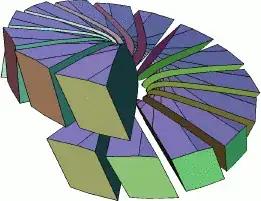In 3D, the maximum number of spheres which can inter-touch is $5$ (MO question Inter-Kissing Number for Spheres of Different Sizes). This maximum reduces to $4$ for unit spheres.
Is there a different shape (e.g., an egg, or a pyramid) for which these maximums are not $5$ and $4$? If so, what shape has the highest maximum?
To avoid "corner touching" (e.g., $8$ cubes could all touch at one corner), please additionally require that every "touch-point" have only one "official connection" (e.g., only $2$ of the $8$ cubes can be declared as touching at the corner).
